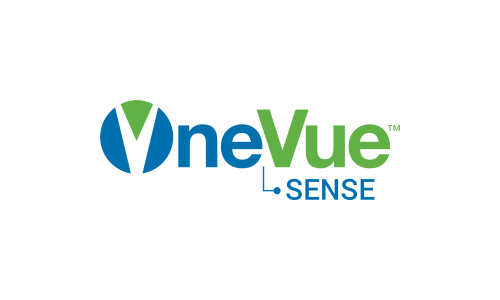Increasing Safety of Large-Scale HVAC Systems With Water Leak Sensors
With approximately 1,750 physicians and 21,000 staff throughout seven hospitals and over 80 outpatient sites, this Midwest health system serves more than 600,000 patients each year. This health system partners with a local university’s school of medicine and public health to fulfill its patient care, research, education, and community service missions.
Primex talked with staff members of this large Midwest health system to learn about the consequences they faced when part of their heating, ventilating, and air conditioning system — specifically, failed air handler units — caused water leaks that went undetected. These leaks occurred on numerous different occasions and inevitably turned into waterfalls in stairwells and showers through ceilings.
“We have 120 air handlers in our main facility that are fed with chilled water in a constant stream to help control the hospital air temperature. This cold water runs through copper cooling coils, and if one of these coils fails, significant water will begin flowing until it’s shut off,” the business and operations manager said.
“Our air handlers are in mechanical spaces away from patients, families, and staff traffic,” the business and operations manager continued. “Therefore, water leaks are likely to remain unnoticed until they intrude into office and clinical settings. Something could go wrong, and we would not know about it until water is coming through the door.”
The consequences of an event like this can be dramatic and damaging, as this incident shows.
The Impact of an Undetected Water Leak
Describing this water emergency, the business and operations manager said that so much water had built up behind the door that it was pouring down multiple floors when discovered. This created long-term adverse impacts for the hospital, ranging from simple damage of ceiling tiles to requiring the complete gutting and repair of patient care units.
According to a study by the Journal of General Internal Medicine, a single hospital bed generates between $255 and $365 in revenue before medical treatment, meaning the loss of a room for days or weeks has a measurable impact on a hospital’s bottom line. In this health system's case, both a cancer treatment area and a patient room were unusable and inhabitable for over a week.
“Repair and reconstruction are not easy tasks in the case of water intrusion,” the control room maintenance lead said. “You’re left with saturated drywall, wood products, and office and computer products. When drywall gets wet, you pretty much have to cut it out and restore the wall before you can even begin the rest of the repair work.”
Beyond the immediate physical damage, a water intrusion also impacts procedures and where patient care is provided.
“We follow a strict infection control program to ensure patients and families are safe and not subject to the side effects of construction and repairs,” the business and operations manager said. “You’re going to need to have contingency plans on where to move the patients, as a water intrusion can also affect everything from staffing to patient satisfaction. Overall, it’s much easier on everyone if we can detect a leak upfront rather than react after an emergency.”
Detecting Leaks Before Criticality
This health system tested Primex OneVue Sense™ water leak sensors for several months to see if they could detect water leaks prior to impacting nonmechanical spaces in their facility.
“We’ve had two events in which the sensors have allowed us to stop a leak,” the business and operations manager said. “They detected a small amount of water, and we were able to take the necessary steps to prevent, at a minimum, ceiling tile damage and labor, and potentially having to clean up and repair patient care areas.”
Leaders also utilized the mobile-friendly, web-based Primex OneVue Monitor™ platform to monitor their air handler units.
“Very few people sit behind desks in our department,” the control room maintenance lead said. “So, it helps that you can actually be mobile with the monitoring system, whether it’s on your phone or tablet. The web-based product is awesome.”
Protecting the Facility With Comprehensive Environmental Monitoring
This health system’s test of the water leak sensors has been a success, so it’s probable that these sensors will be added to the system’s robust environmental monitoring program. This program already includes Primex OneVue Sense refrigeration and cryogenic storage temperature sensors, as well as differential air pressure sensors for surgical suites and containment wards.
“Proactive environmental monitoring is huge,” the business and operations manager said. “That’s why we have spent a significant amount of time making sure we have a strong program in place.”
Primex is proud to partner with this health system to help keep treatment areas and patient rooms in operation.

Results
- Any closure of a patient room or treatment area will have an impact on patient care and staff, and preventing water leaks before they materialize can minimize unplanned resource needs
- Primex OneVue Sense water leak sensors prevented two leaks before they turned into bigger problems
- The web-based Primex OveVue Monitor software allowed staff to stay aware of their facility’s air handler units from a mobile phone or tablet